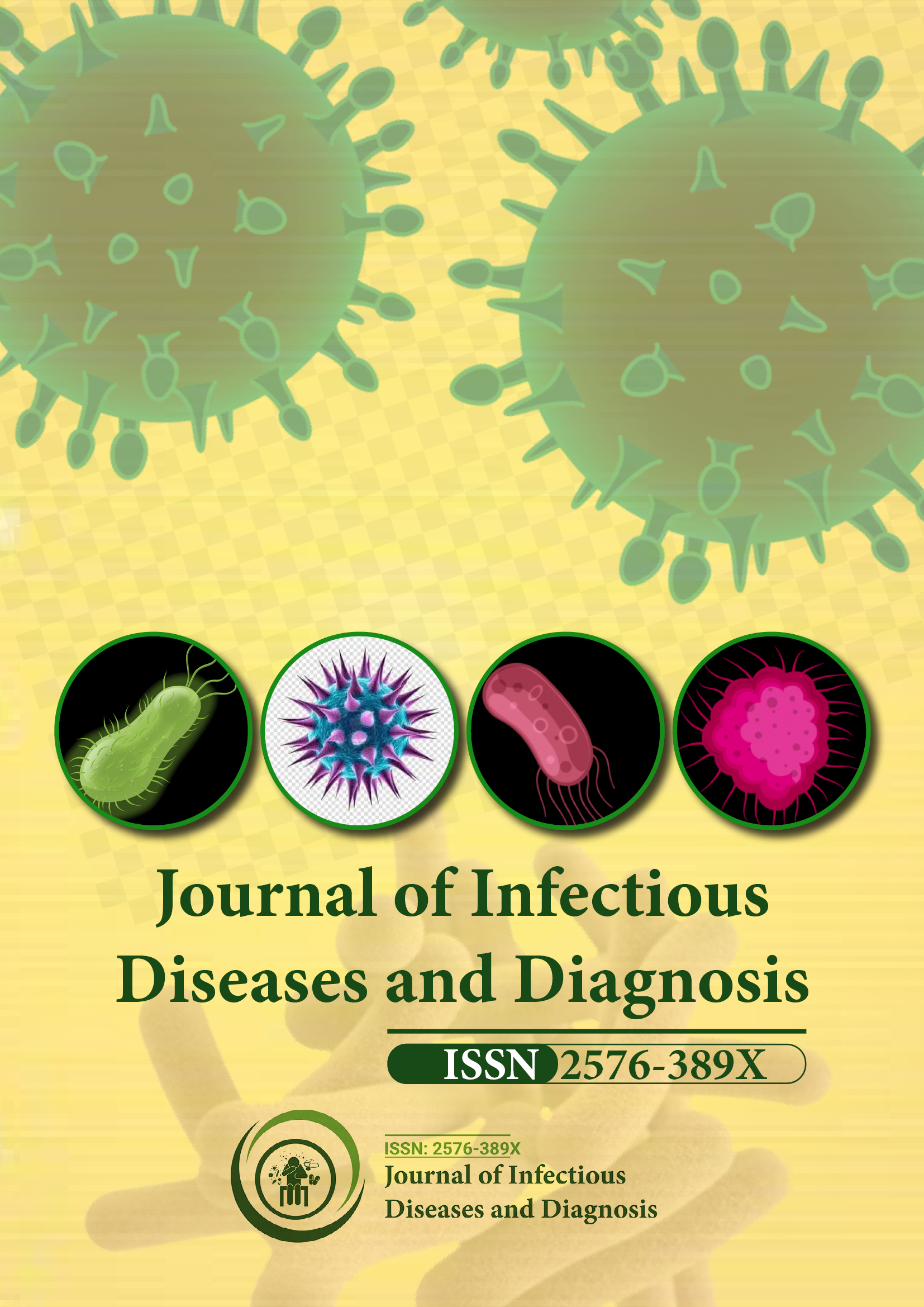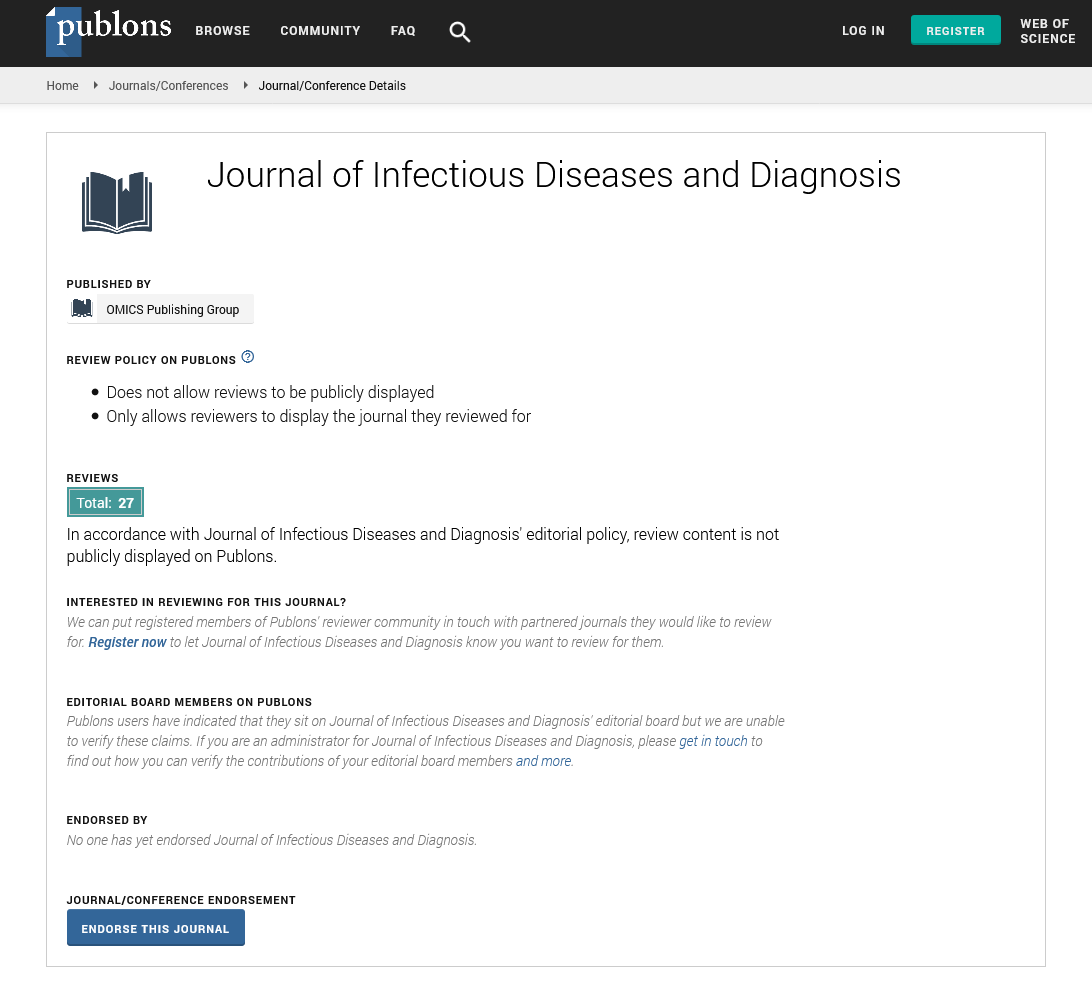Indexed In
- RefSeek
- Hamdard University
- EBSCO A-Z
- Publons
- Euro Pub
- Google Scholar
Useful Links
Share This Page
Journal Flyer

Open Access Journals
- Agri and Aquaculture
- Biochemistry
- Bioinformatics & Systems Biology
- Business & Management
- Chemistry
- Clinical Sciences
- Engineering
- Food & Nutrition
- General Science
- Genetics & Molecular Biology
- Immunology & Microbiology
- Medical Sciences
- Neuroscience & Psychology
- Nursing & Health Care
- Pharmaceutical Sciences
Perspective - (2025) Volume 10, Issue 3
Clinical Utility of Procalcitonin and CRP in Differentiating Bacterial from Viral Respiratory Infections in Pediatric Patients
Daniel Mike*Received: 30-Apr-2025, Manuscript No. JIDD-25-29298; Editor assigned: 02-May-2025, Pre QC No. JIDD-25-29298 (PQ); Reviewed: 16-May-2025, QC No. JIDD-25-29298; Revised: 23-May-2025, Manuscript No. JIDD-25-29298 (R); Published: 30-May-2025, DOI: 10.35248/2576-389X.25.10.333
Description
Respiratory infections are among the most common reasons for pediatric visits and hospital admissions worldwide. Differentiating between bacterial and viral causes is often challenging based solely on clinical features, especially in young children. This distinction, however, is essential to avoid unnecessary antibiotic prescriptions, which contribute to antimicrobial resistance and potential side effects. Biomarkers such as C-Reactive Protein (CRP) and Procalcitonin (PCT) have been increasingly studied for their ability to aid in this diagnostic challenge. CRP is an acute-phase protein that rises in response to inflammation, while PCT is more specifically associated with bacterial infections and tends to remain low during viral illnesses. This study aimed to evaluate and compare the diagnostic value of CRP and PCT in pediatric patients with acute respiratory infections.
The prospective study enrolled 560 children aged 2 months to 12 years who presented with fever and symptoms of respiratory infection at two tertiary care hospitals. Patients with known immunodeficiencies or chronic inflammatory conditions were excluded. Each child underwent clinical examination, complete blood count, chest radiography when indicated and sample collection for CRP and PCT testing. Nasopharyngeal swabs were obtained for viral PCR and blood or sputum cultures were performed when bacterial infection was suspected. Based on microbiological testing and clinical follow-up, cases were classified as bacterial, viral, or indeterminate. Among the 560 children, 184 were confirmed to have bacterial infections (such as pneumonia, streptococcal pharyngitis, or otitis media), 251 had viral infections (including influenza, RSV and rhinovirus) and the remaining 125 were indeterminate due to mixed findings or negative microbiology results.
The CRP values were significantly higher in the bacterial group, with a median of 67 mg/L compared to 18 mg/L in the viral group. However, overlap in CRP levels between the two groups was noted, particularly in early illness stages. Procalcitonin levels showed a more distinct separation, with a median of 3.1 ng/mL in bacterial cases versus 0.2 ng/mL in viral infections. Using a cutoff value of 0.5 ng/mL for PCT, sensitivity and specificity for identifying bacterial infection were 88% and 82%, respectively. For CRP, a cutoff of 40 mg/L provided 75% sensitivity and 68% specificity. In children with confirmed bacterial pneumonia, both CRP and PCT levels were markedly elevated and PCT showed earlier elevation within 6 hours of symptom onset. In contrast, CRP rose more slowly and peaked later. Among patients with viral bronchiolitis or upper respiratory tract infections, both biomarkers remained low or mildly elevated. These patterns suggest that PCT may provide a more immediate and specific indication of bacterial infection.
Clinical decisions based on biomarker values showed improved outcomes. In one hospital, physicians used PCT levels to guide antibiotic initiation. Children with low PCT values were managed symptomatically and only a small proportion required antibiotics later due to secondary bacterial infection. Antibiotic use in this group was reduced by 32% without any increase in complications. This approach was well accepted by clinicians, who reported increased confidence in withholding antibiotics when PCT levels were low.
The study also assessed the cost and feasibility of implementing routine PCT and CRP testing. CRP testing was widely available and inexpensive, while PCT testing was slightly costlier but manageable when used selectively. Combining both markers in a stepwise approach, where CRP screening is followed by PCT testing in ambiguous cases, provided a balanced strategy. This method reduced unnecessary PCT testing while maintaining diagnostic accuracy. Among the 125 indeterminate cases, further evaluation showed that CRP and PCT trends over 48 hours helped clarify diagnosis. Children whose biomarker levels declined rapidly were more likely to have had viral infections, while persistently high or rising levels were associated with occult bacterial infection. Serial measurements added value in uncertain cases and helped guide continuation or cessation of antibiotics.
The study also highlighted the importance of contextual interpretation. Factors such as age, nutritional status and underlying conditions influenced biomarker levels. For instance, younger infants occasionally showed low PCT despite confirmed bacterial infection, likely due to immature immune response. Conversely, some viral infections, like adenovirus, caused high CRP levels that mimicked bacterial patterns. These exceptions underscore the need for clinical judgment alongside biomarker results.
In conclusion, the combined use of procalcitonin and CRP offers valuable support in differentiating bacterial from viral respiratory infections in children. Procalcitonin demonstrates superior specificity and earlier elevation in bacterial cases, making it a reliable tool for timely decision-making. CRP remains a useful, accessible marker but is less specific when used alone. Integrating these biomarkers into routine pediatric care, especially in emergency and outpatient settings, can reduce antibiotic misuse, enhance patient outcomes and support antimicrobial stewardship. While clinical context remains essential, biomarker-guided management represents a practical and evidence-based advancement in pediatric respiratory care.
Citation: Mike D (2025). Clinical Utility of Procalcitonin and CRP in Differentiating Bacterial from Viral Respiratory Infections in Pediatric Patients. J Infect Dis Diagn. 10:333.
Copyright: © 2025 Mike D. This is an open-access article distributed under the terms of the Creative Commons Attribution License, which permits unrestricted use, distribution, and reproduction in any medium, provided the original author and source are credited.

